
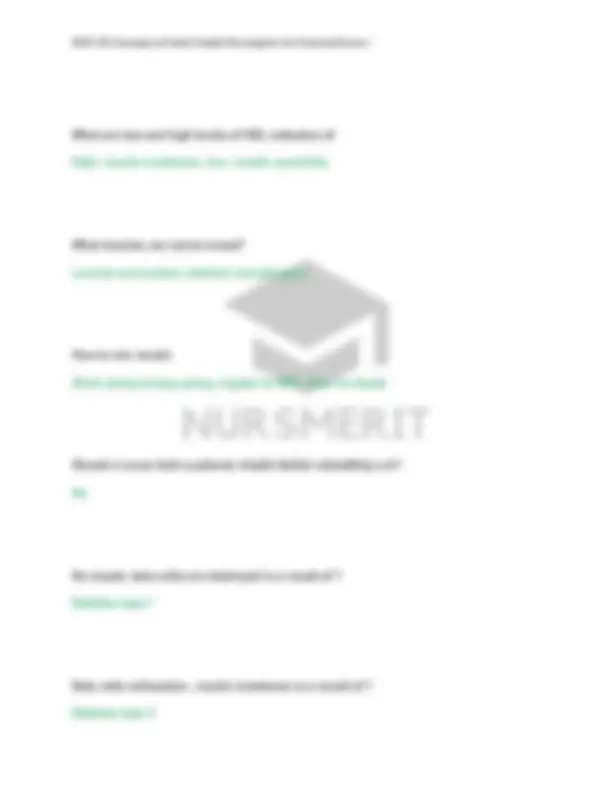
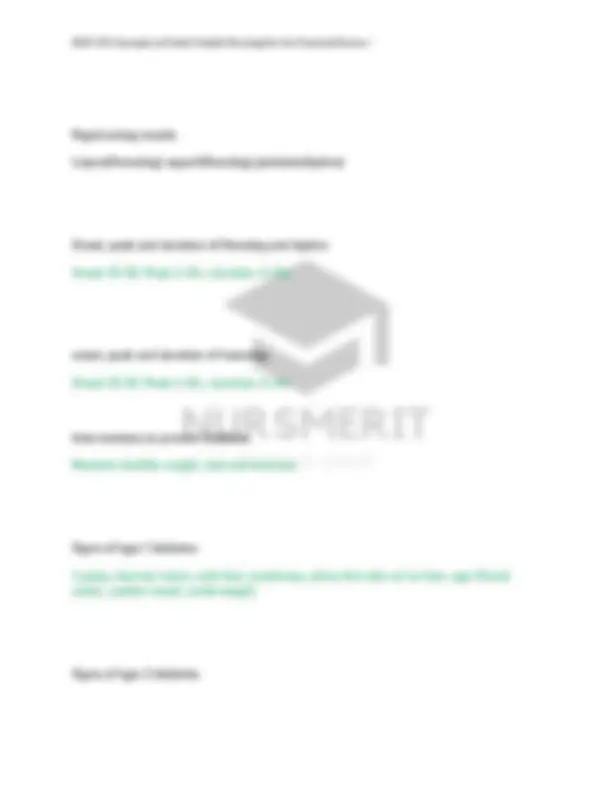
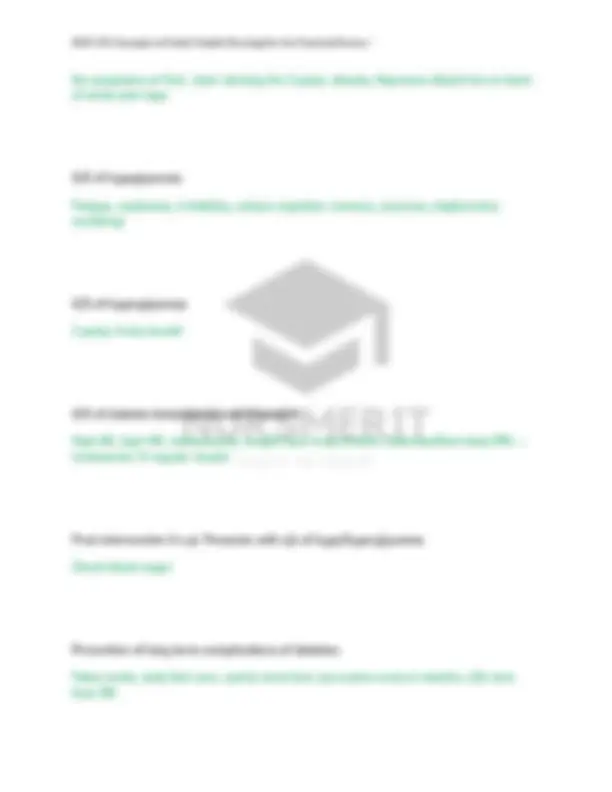
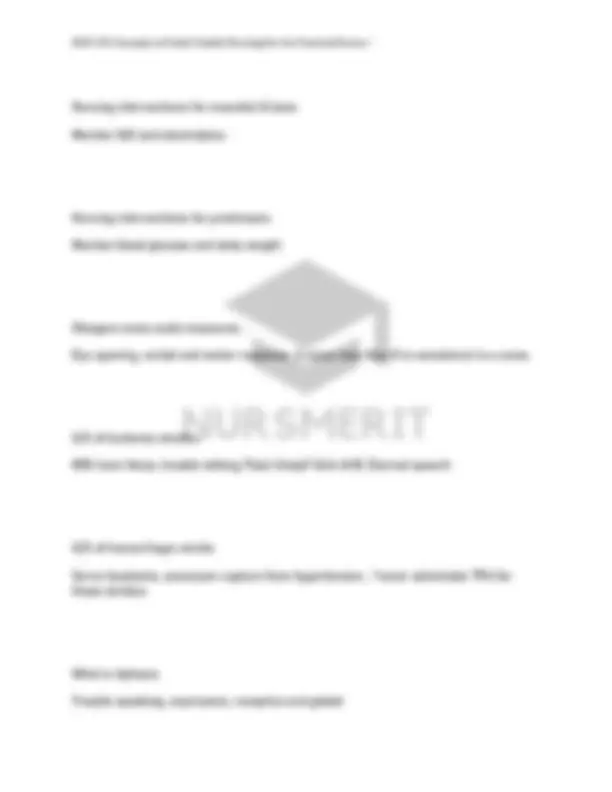
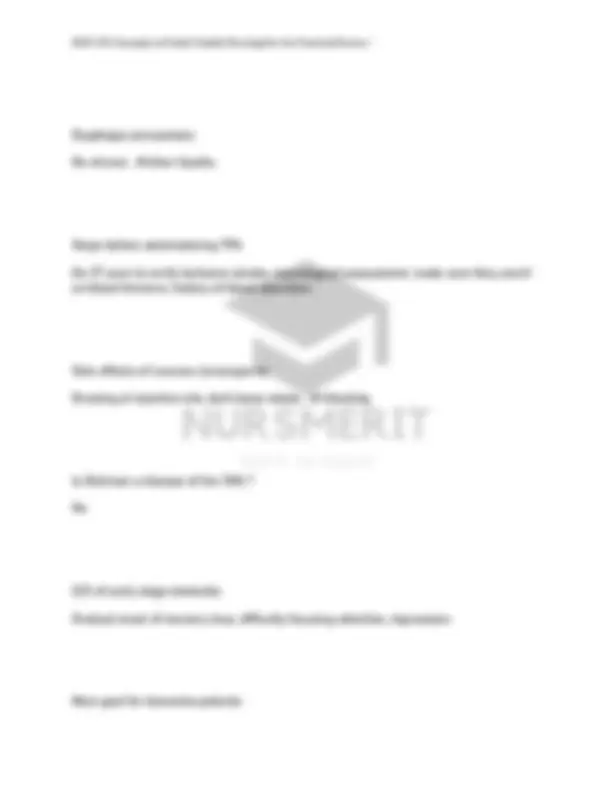
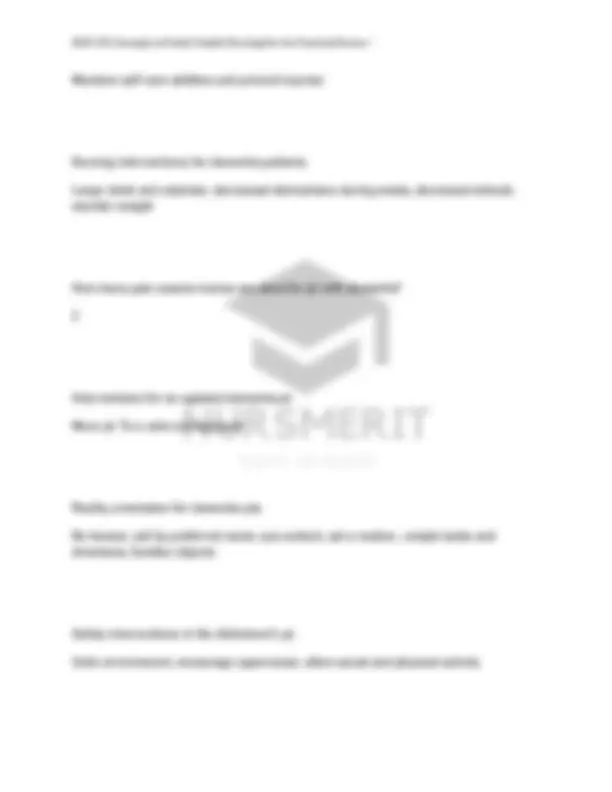
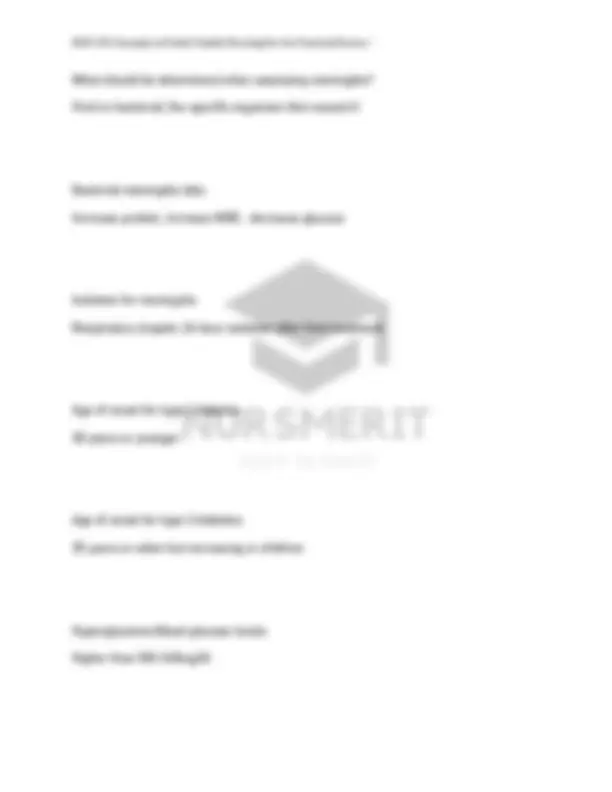
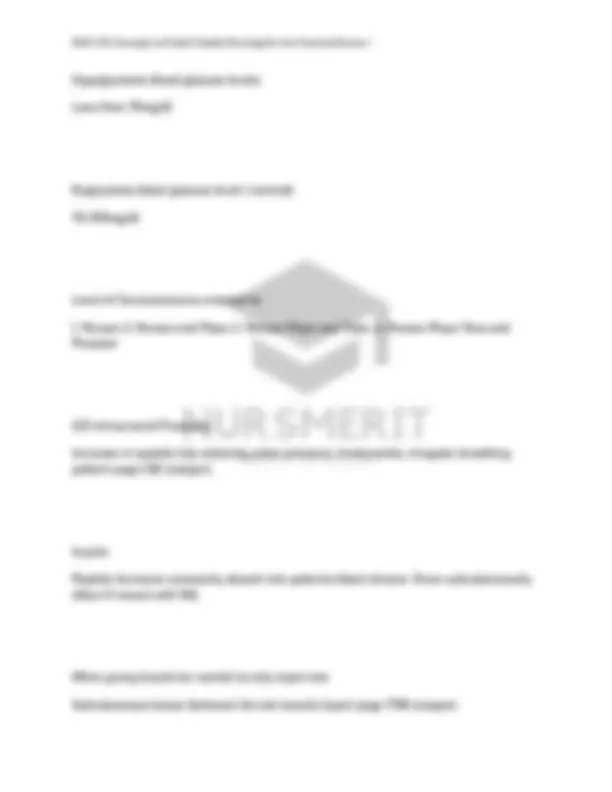

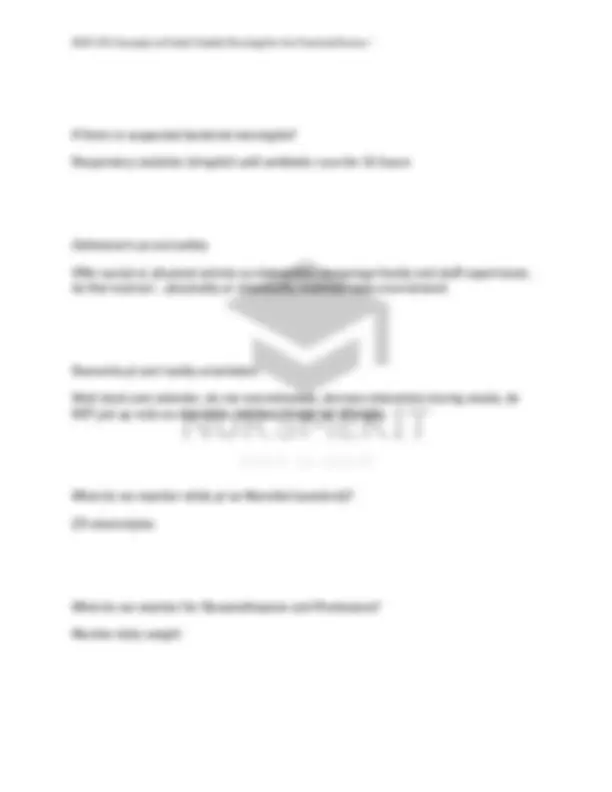
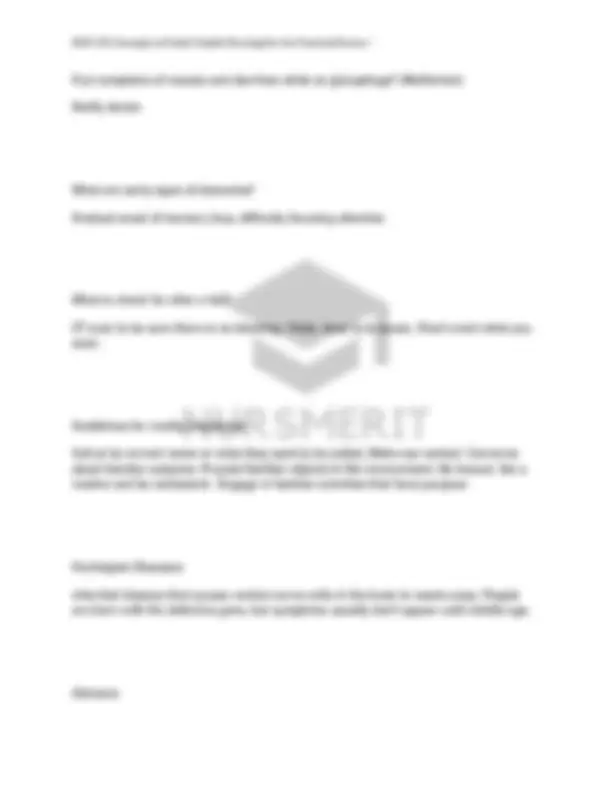
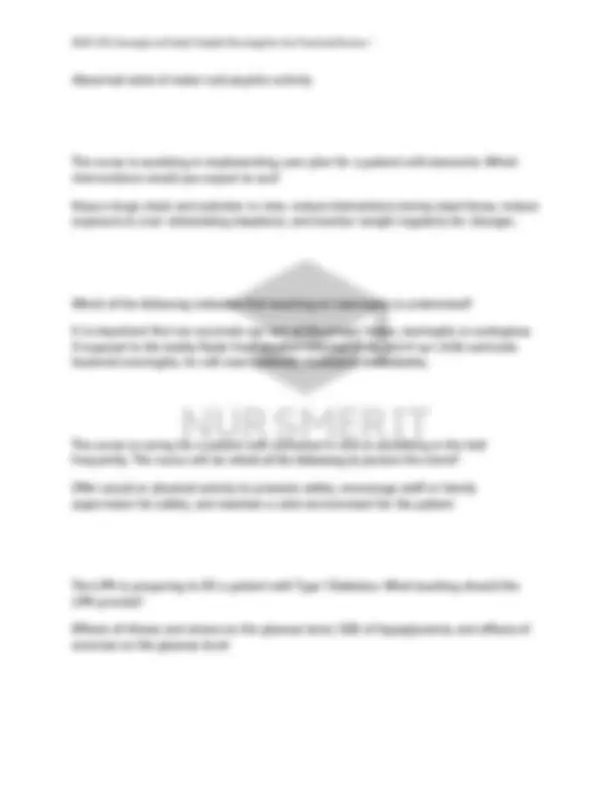

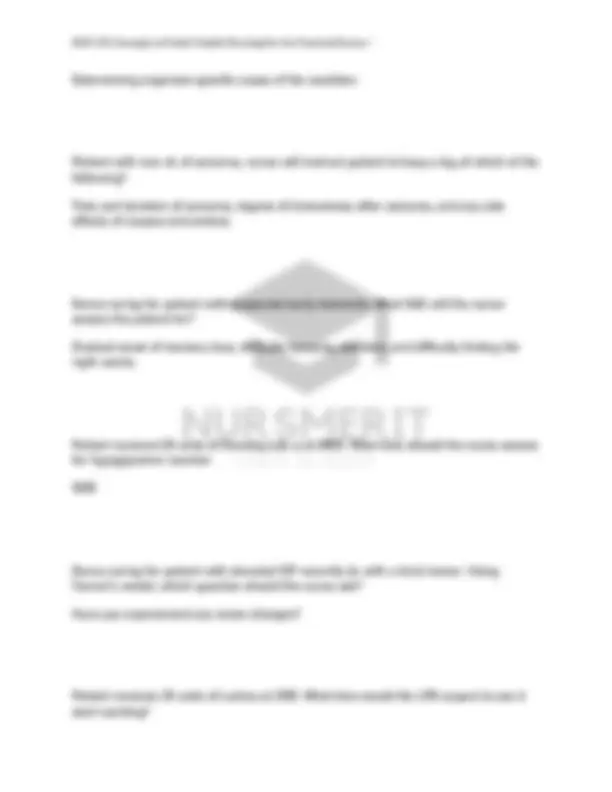
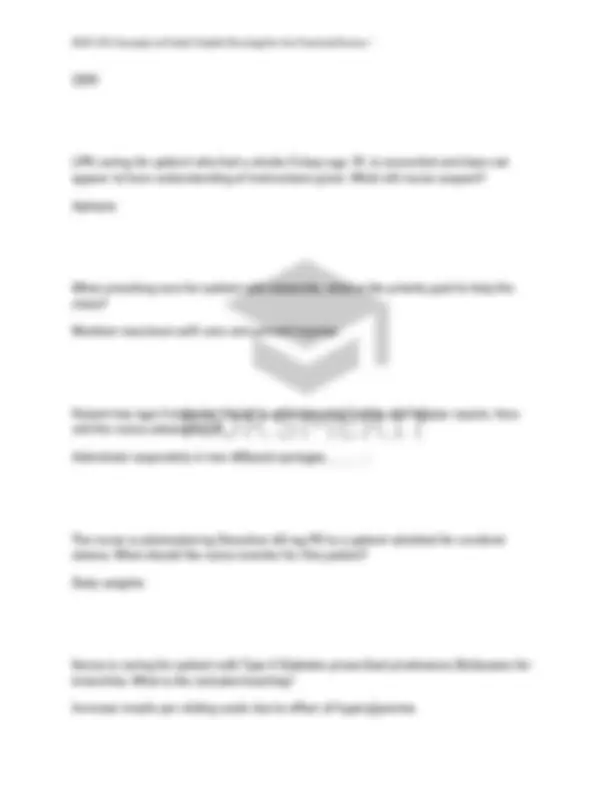
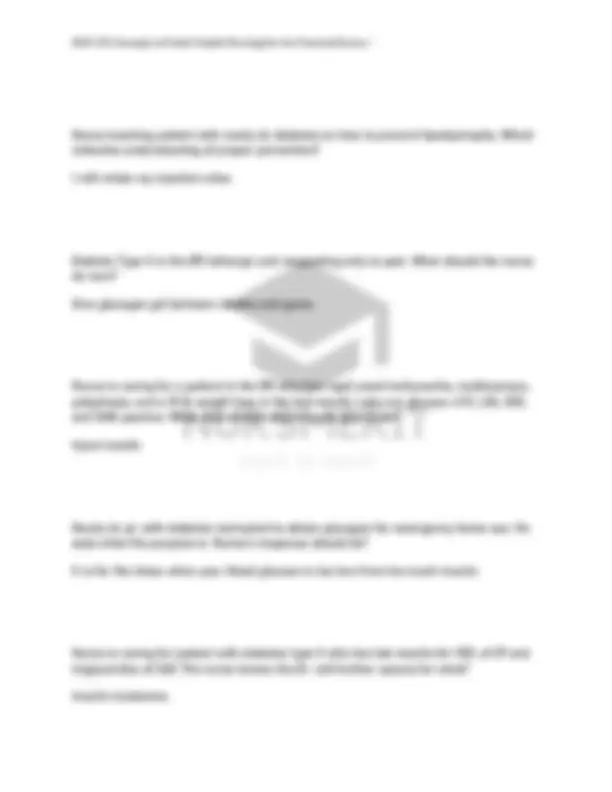
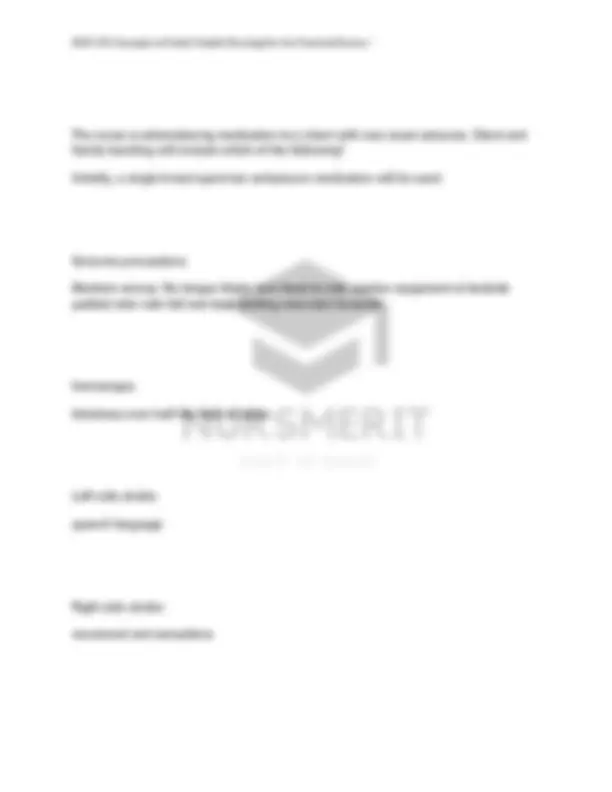
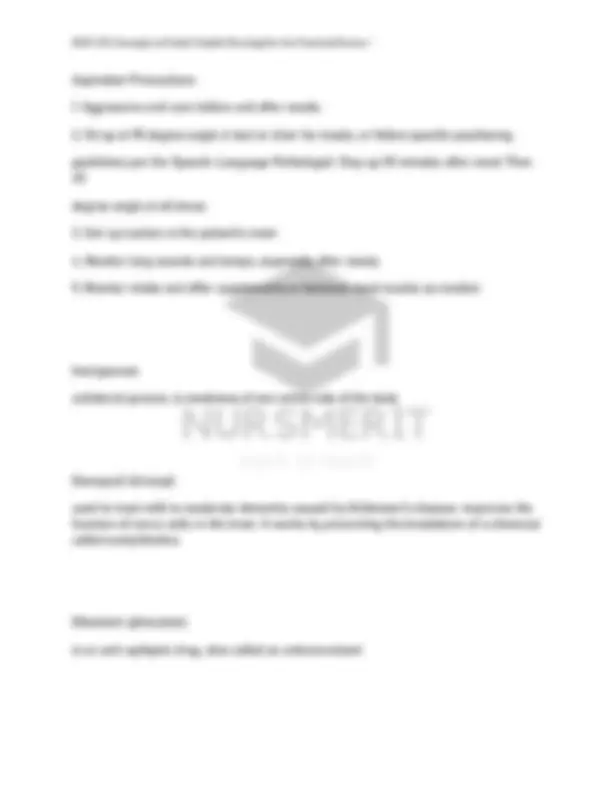
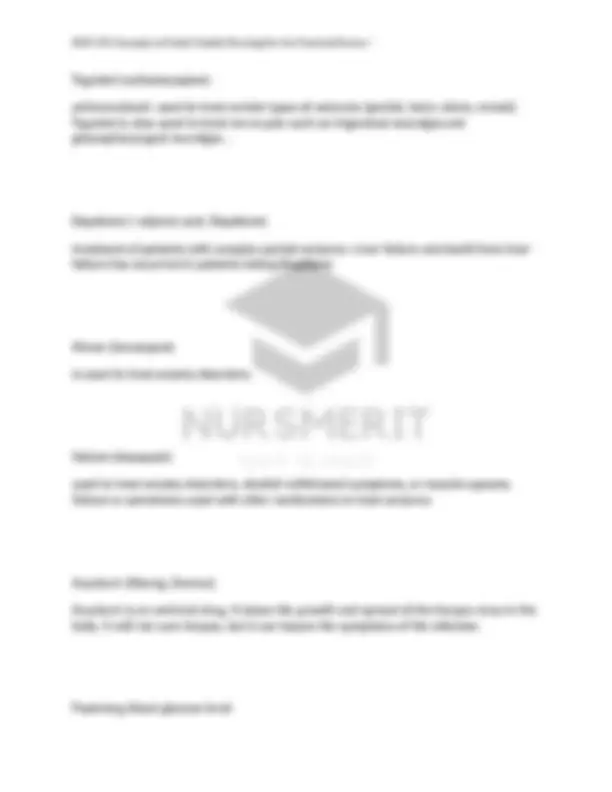
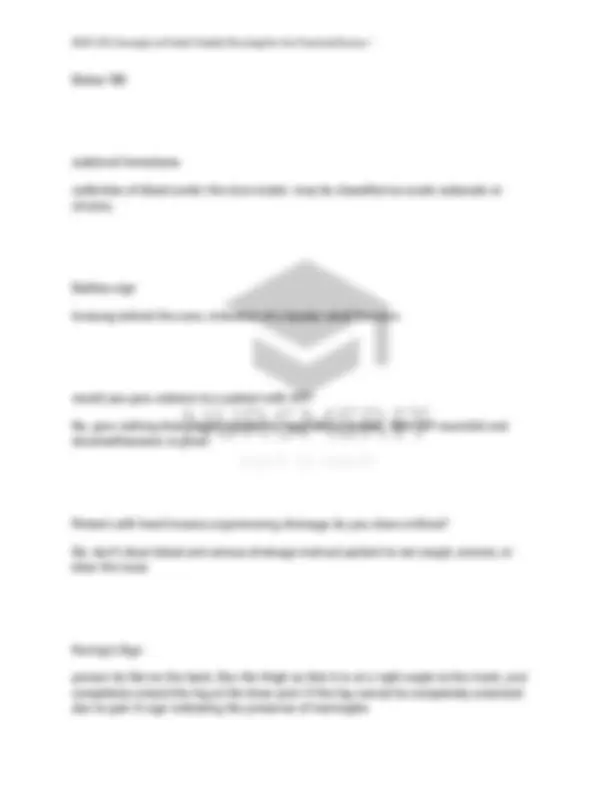
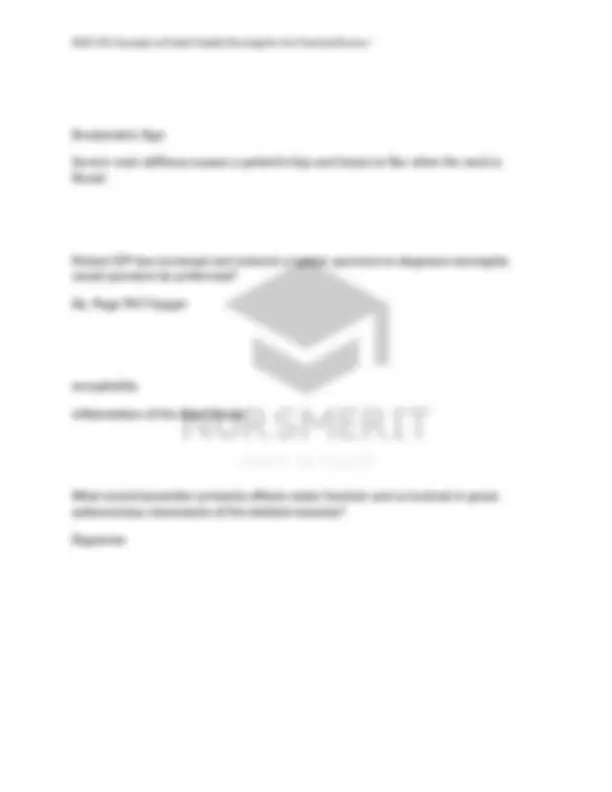


Study with the several resources on Docsity

Earn points by helping other students or get them with a premium plan


Prepare for your exams
Study with the several resources on Docsity

Earn points to download
Earn points by helping other students or get them with a premium plan
Community
Ask the community for help and clear up your study doubts
Discover the best universities in your country according to Docsity users
Free resources
Download our free guides on studying techniques, anxiety management strategies, and thesis advice from Docsity tutors
HONDROS NUR 176 ADULT HEALTH NURSING EXAM 1 2025 SUMMER- FALL (REAL EXAM HCN) GRADED A
Typology: Exams
1 / 29

This page cannot be seen from the preview
Don't miss anything!






















The nurse is caring for a patient who is being evaluated for a neurologic disorder. She is not able to comprehend the written or spoken word. Which term would the nurse use to document this problem? Global aphasia (Global aphasia is the inability to understand the spoken word or to speak) The nurse will implement which of these nursing interventions for the patient with increased intracranial pressure? Teach patient to avoid Valsalva maneuver. Position patient to avoid flexion of hips, waist, and neck. Suction only as necessary, but no longer than 10 seconds. Place neck in neutral position. Page 1915 Two vaccines for meningitis for children meingoccal polysaccharide (Menomune) and quadrivlant menigococcal conjugate (Menactra) Dysarthria
often is characterized by slurred or slow speech that can be difficult to understand. Common causes of dysarthria include nervous system (neurological) disorders such as stroke, brain injury, brain tumors, and conditions that cause facial paralysis or tongue or throat muscle weakness. Dietary teaching for a diabetic patient Meals at the same time every day, decrease saturated fats, increase exercise , refer pt. To MyPlate learning tool, Diabetic Pt. should never increase carbs unless... Sugar is low before exercising Discharge teaching for diabetic pt. Know hypo/hyperglycemia s/s, know that stress and illness increase BS , see a diabetic educator, know what the effect of Exercise can have on Bs Diabetic foot care Clean w/ soap and warm water, clean socks everyday, cut toe nails straight across, keep feet dry, no powder or lotion b/t toes , wear shoes , inspect feet daily, no gardners Lipid analysis LDL-less than 100 HDL- more than 40 Triglycerides- more than 150
Rapid acting insulin Lispro(Humalog) aspart(Novolog) glulisine(Apidra) Onset, peak and duration of Novolog and Apidra Onset- 15 - 30, Peak- 1 - 3hr, duration- 3 - 5hr onset, peak and duration of humalog Onset- 15 - 30, Peak- 1 - 2hr, duration- 3 - 4hr Interventions to prevent diabetes Maintain healthy weight, diet and exercise Signs of type 1 diabetes 3 polys, blurred vision, cold feet, numbness, shiny thin skin w/ no hair, age 30 and under, sudden onset, underweight, Signs of type 2 diabetes
No symptoms at first , later develop the 3 polys, obesity, Nigricans (black line on back of neck) skin tags S/S of hypoglycemia Fatigue, weakness, irritability, reduce cognition, tremors, seizures, diaphoresis( sweating) S/S of hyperglycemia 3 polys, fruity breath S/S of diabetic ketoacidosis and treatment High BS, high HR, restlessness, weight loss, fruity breath, kussmaul(fast deep RR) -- treatments; IV regular insulin First intervention if a pt. Presents with s/s of hypo/hyperglycemia Check blood sugar Prevention of long term complications of diabetes Takes meds, daily feet care, yearly renal test, eye exams every 6 months, LDL less than 150
If a pt. Is lethargic, what form of glucose should be administered? Glucagon gel in cheek What is Lipohypotrophy and the prevention? Lump under subcut tissue due to repeated injections at the same site. Rotate sites S/s of brain tumor Vision changes, confusion and headache S/S of traumatic brain injury Blurred vision, personality changes, altered level of consciousness, slurred speech, confusion, headache, uncoordinated, weakness / numbness of legs and arms If someone hit their head, which test should be completed? CT scan to make sure there's no head bleeding Early signs of IICP Altered levels of consciousness
Nursing interventions for mannitol & lasix Monitor I&O and electrolytes Nursing interventions for prednisone Monitor blood glucose and daily weight Glasgow coma scale measures .. Eye opening, verbal and motor response. A score less than 8 is considered in a coma S/S of Ischemic strokes 80% have these, trouble talking, Face droop? Arm drift, Slurred speech S/S of hemorrhagic stroke Serve headache, aneurysm rupture from hypertension , *never administer TPA for these strokes What is Aphasia Trouble speaking, expressive, receptive and global
Maintain self care abilities and prevent injuries Nursing interventions for dementia patients Large clock and calendar, decreased distractions during meals, decreased stimuli, monitor weight How many pain assess menus are done for pt with dementia? 2 Interventions for an agitated dementia pt. Move pt. To a calm environment Reality orientation for dementia pts Be honest, call by preferred name, eye contact, set a routine , simple tasks and directions, familiar objects Safety interventions in the Alzheimer's pt. Calm environment, encourage supervision, allow social and physical activity
Med for multiple sclerosis Copaxone Generalized tonic-clonic seizures (grand mal) Most common, stiffening of body for 10-20 sec. then jerking extremities for another 30- 40 secs Absence seizures ( petit mal) Occurs during childhood, stares off with little to no tonic-clonic movement Psychomotor (partial seizures) Occurs at any age, pt. Behaves in a drunk manner, doesn't remember Jacksonian-focal seizures ( local or partial) Occur in pts. With structural brain disease, starts in the hands or feet, can turn into tonic-clonic Myoclonic seizures
What should be determined when assessing meningitis? Viral or bacterial, the specific organism that caused it Bacterial meningitis labs Increase protein, increase WBC , decrease glucose Isolation for meningitis Respiratory droplet, 24 hour isolation after first treatment Age of onset for type 1 diabetes 30 years or younger Age of onset for type 2 diabetes 35 years or older but increasing in children Hyperglycemia Blood glucose levels Higher than 100-140mg/dl
Hypoglycemia blood glucose levels Less than 70mg/dl Euglycemia blood glucose level ( normal) 70 - 100mg/dl Level of Consciousness oriented to
Postictal Period Rest period of a seizures varies in length Epilepsy Chronic two or more unprovoked seizures Seizure A disorder in which nerve cell activity in the brain is disturbed, causing seizures. What is the action of glucagon? Increases blood sugar (blood glucose) What does the nurse record after a seizure? Duration and time, degree of drowsiness afterward, SE of N/V Can we restrain a pt having a seizure? No
Can we place something in a pt's mouth to protect their airway? No Phenytoin and pt teaching? Avoid alcohol, good oral hygiene, may have driving restrictions, pt needs to take meds even when seizures stop Why is it important to find pathogen that caused Meningitis? So it can be treated properly meningitis Inflammation of brain and spinal cord membranes, typically caused by an infection. What test is usually done to determine the type of organism in Meningitis? Lumbar puncture Pt teaching about Meningitis? Vaccinations are important; bacterial treated with antibiotics, viral treated with comfort measures
If pt complains of nausea and diarrhea while on glucaphage? (Metformin) Notify doctor. What are early signs of dementia? Gradual onset of memory loss, difficulty focusing attention What to check for after a fall? CT scan to be sure there is no bleeding. Vitals, head to to asses. Chart event what you seen. Guidelines for reality orientation Call pt by correct name or what they want to be called. Make eye contact. Converse about familiar subjects. Provide familiar objects in the environment. Be honest. Set a routine and be contestant.. Engage in familiar activities that have purpose. Huntington Diseases inherited disease that causes certain nerve cells in the brain to waste away. People are born with the defective gene, but symptoms usually don't appear until middle age. Akinesia
Abnormal state of motor and psychic activity The nurse is assisting in implementing care plan for a patient with dementia. Which interventions would you expect to see? Keep a large clock and calendar in view, reduce distractions during meal times, reduce exposure to over-stimulating situations, and monitor weight regularly for changes. Which of the following indicates that teaching on meningitis is understood? It is important that we vaccinate our son at the proper times, meningitis is contagious if exposed to the bodily fluids from another infected child, and if our child contracts bacterial meningitis, he will need antibiotic treatment immediately. The nurse is caring for a patient with alzheimer's who is stumbling in the hall frequently. The nurse will do which of the following to protect the client? Offer social or physical activity to promote safety, encourage staff or family supervision for safety, and maintain a calm environment for the patient. The LPN is preparing to DC a patient with Type 1 Diabetes. What teaching should the LPN provide? Effects of illness and stress on the glucose level, S&S of hypoglycemia, and effects of exercise on the glucose level